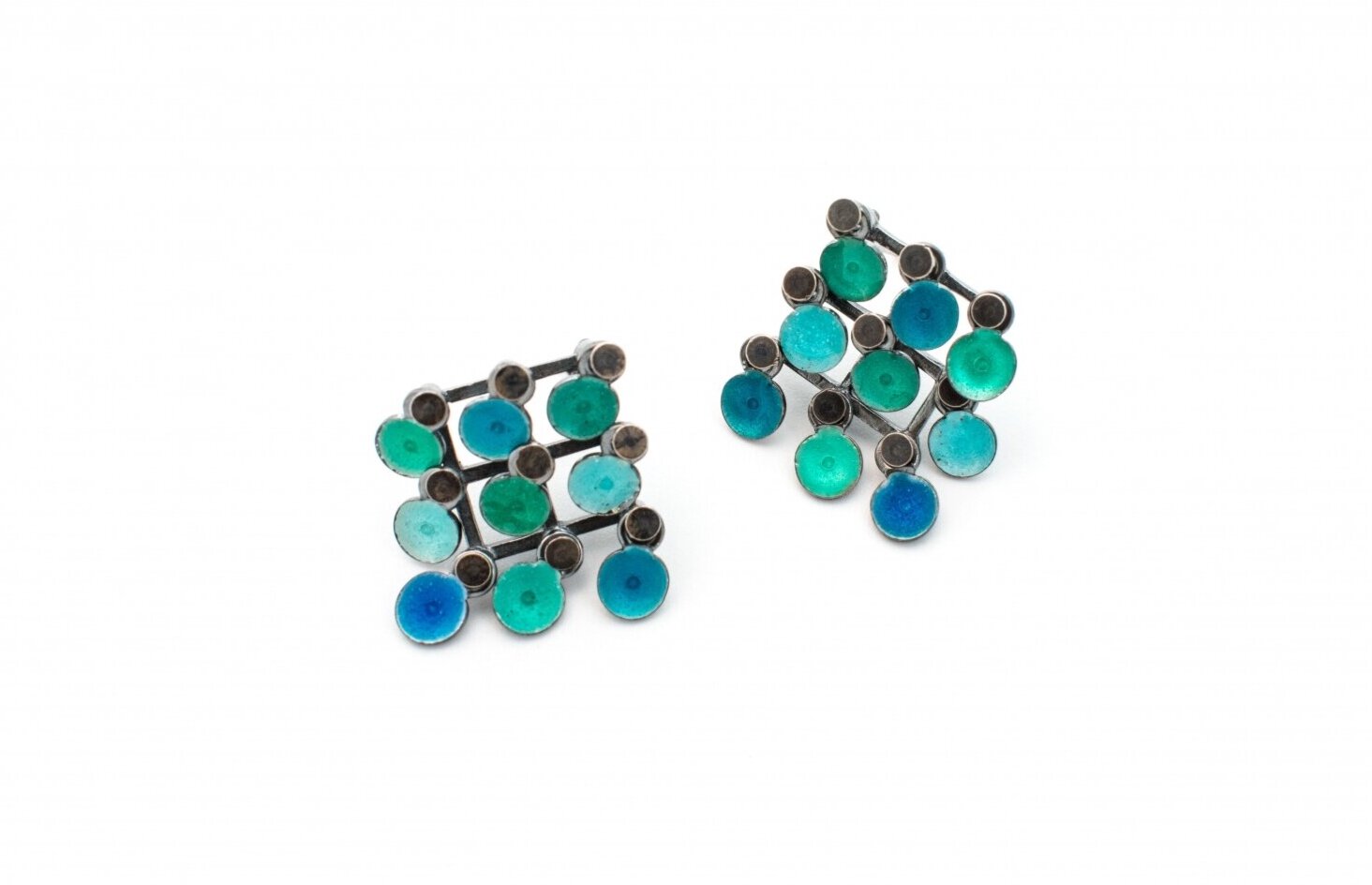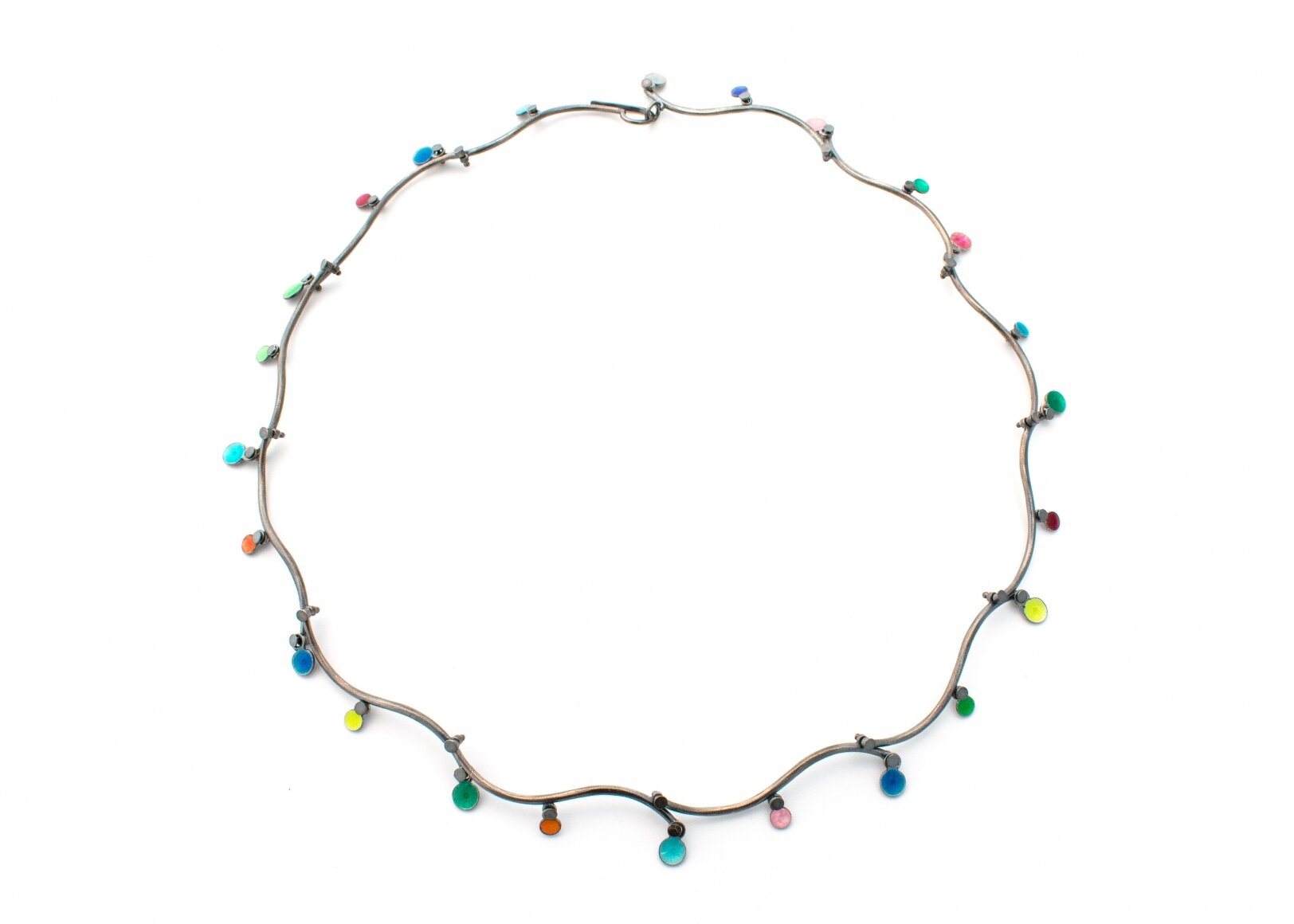B A R B A R A S E I D E N A T H
Barbara Seidenath is a jeweler and educator currently teaching at Rhode Island School of Design. She has taught at Massachusetts College of Art and Design and the SMFA in Boston, MA. She loves sharing her knowledge with students of all levels in workshops around the country.
Born and educated in Germany, she studied at the Academy of Fine Arts in Munich with Professor Hermann Jünger before relocating to the US in 1990 where she is based in Providence, RI.
Throughout her career her passion and focus in the studio has been enameling. Her work has been published in Metalsmith Magazine and you can find her pieces in the collection of Boston’s Museum of Fine Arts, the Los Angeles County Museum in LA and the Enamel Arts Foundation in Los Angeles, CA.
Hi Barbara! Thank you so much for participating in Commence Jewelry’s Q+A. Your voice and work are highly valued and we at CJ are so pleased to hear your perspective on studio, education, and more.
Interview by Betsy Lewis
Where are you from?
I was born and grew up outside Munich in Southern Germany
How and when did you first find yourself working jewelry?
When I was in High school, I became good friends with Anet Jünger, one of Hermann Jünger’s daughters. Through her, I was introduced to her father’s and other friend’s jewelry studios when I was 15 and started learning how to make little rings and stone settings for ourselves. It was magic and that was all I longed to do. That is why I also love teaching Beginners jewelry, it allows me to be part of the joy and magic when students start working with metal.
Can you name a favorite residency or shared studio experience?
I have not had a residency opportunity yet but would love to apply to one in the future. I have loved my experiences in shared learning and working environments such as Haystack, ME and Penland, NC. At this point I also would like to share how important and valuable my experience as an exchange student at SUNY New Paltz in 1981 was for me. I had the good fortune to meet and study with the wonderful Bob Ebendorf. This presents a nice transition into the next question as this fortunate connection was formed by Hermann Jünger after young Bob showed up at his doorstep on day. (keep in mind this was before the internet and everything seemed pretty far away and mysterious)
What was it like to study under Hermann Jünger?
Hermann Jünger came to the Academy usually once a week to meet with us students as a group or one-on-one. Everyone was working on their own projects, assignments were rarely given. All levels of students worked together in 3 small classrooms and a shared forging room. Critiques were generally pretty tough, you felt lauded when you were told: ‘not bad, but you could do better, keep working’ Hermann’s standards of personal and artistic integrity and design quality were very high. Once a year he organized a student trip, usually to another European country or city with a jewelry program or colleagues whom we visited. These trips were great adventures, opened our eyes and formed connections with other artists (remember this was prior to the internet). We had a lot of fun. The most valuable experience was working as his studio assistant for a few years. This is where I learned the most, observing him and how he worked and thought about
design and art. He and his wife Jo, cultivated a most generous family and open household. They marked no separations between their daily life and their work and we students were often invited to parties and events he organized. Everyone was included. I learned a great deal about food and cooking from Jo. The best bonus of working there was that she made delicious lunch for everyone.
After graduating from Academy of Fine Arts in Munich, how did you keep your studio practice active?
As education in Germany was free, I had the fortune not to leave school burdened by debt. Once I graduated from the Academy in Munich, I started a successful production jewelry business, partnering with Lydia Gastroph. I also continued to make one-of-a-kind jewelry pieces that I showed and sold.
What are your top observations about how education has changed?
I find that education at least in our specific field has changed for the better regarding many aspects. The federal accountability requirements have sped up more thoroughly as well as the professional changes in syllabus and curriculum. Another development is the focus on seminar-based courses in Jewelry programs around the country.
Seidenath in her studio. Providence, RI.
Do you think the field is still male dominated?
Having been educated in the field during a time where it was mainly male dominated especially in the positions of leadership, I welcome the changes that have happened and are ongoing towards our field representing more diverse groups of practitioners and educators. I think what ultimately matters most is artistic integrity.
What is your favorite question you get about your work?
WOW, what is this? how did you make this?
And the least?
Not applicable. Love all questions :)
I have the total pleasure of being your and Johan van Aswegen’s colleague at the Rhode Island School of Design. I love hearing the students connect what they learn in your History of Adornment class, and see how they bring that knowledge into their metalwork. Is there a particular era of jewelry+metal you enjoy teaching the most?
Tough question!!! I usually can get genuinely excited about all genres of jewelry and topics pertaining to jewelry. Love teaching my students about making connections and understanding how and what values are placed on jewelry. I strive to share my passion for the subject of how personal adornment is a universal human communication system. Love teaching students about the fabulous creativity from our fellow makers in the Pacific Islands, Africa and India. I personally love the jewelry of the Renaissance, especially the use of enamels from the period.
Winding down from a long day of teaching or working in the studio, what is your go to meal to make?
In the fall and winter, my super easy comfort dish is a bowl of pasta with lots of herbs, sautéed onions, garlic and mushrooms and garlic and anchovies. In the summer it is a fresh summer garden salad with tomatoes, cucumbers, corn, peppers and feta cheese.









